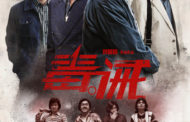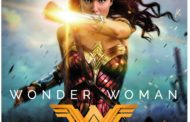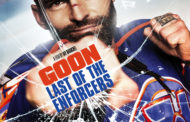 Opening with a very ominous score, a Japanese vessel off the coast unexpectedly sinks, going down in flames with nearly the entire crew being killed. When a rescue boat goes out to find survivors the same thing happens, but this time people return with the strange story that it was a monster. After investigating the incidents and hearing stories from survivors, the inhabitants of Odo Island, and eventually the researchers, start to believe that it was, in fact, a monster of the deep, especially when he shows up. Many of the locals pray to a creature called Godzilla and believe that since the food supply has shrunk in the water and that the Japanese have been testing H-bombs in the sea, he is slowly making his way to the shore to feed and punish those who have infiltrated his turf. The film specifically follows a group of scientists and military personnel as they attempt to figure out how to stop Godzilla from unleashing a new wave of destruction over a recently rebuilt Japan.
Opening with a very ominous score, a Japanese vessel off the coast unexpectedly sinks, going down in flames with nearly the entire crew being killed. When a rescue boat goes out to find survivors the same thing happens, but this time people return with the strange story that it was a monster. After investigating the incidents and hearing stories from survivors, the inhabitants of Odo Island, and eventually the researchers, start to believe that it was, in fact, a monster of the deep, especially when he shows up. Many of the locals pray to a creature called Godzilla and believe that since the food supply has shrunk in the water and that the Japanese have been testing H-bombs in the sea, he is slowly making his way to the shore to feed and punish those who have infiltrated his turf. The film specifically follows a group of scientists and military personnel as they attempt to figure out how to stop Godzilla from unleashing a new wave of destruction over a recently rebuilt Japan.
The original Japanese Godzilla directed by Ishiro Honda, not the Godzilla we’ve all come to know and love with Raymond Burr, isn’t a goofy monster film that introduced us to the powerhouse now known as the king of the monsters. In fact, it’s quite the opposite even if there is unintentional humor in the translation and romantic side plots. The real Godzilla is a poignant, intelligent and excellent commentary on the use of nuclear weapons in a post WWII Japan. It’s a haunting and smart film that aims to show the dangers of actually using nuclear weapons, or some form of technology that has the capability to exert great power, whether it be in the hands of people who would use it for good rather than evil.
In comparison to today’s standards, the film looks amateurish but for the time it was an impressive feat, particularly when it comes to the editing and the destruction of the city. Eiji Tsuburaya’s utilization of the body suit in conjunction with the unbelievably intricate miniature cities that were built still looks incredible after all these year. What I truly appreciated was that the black and white coloring doesn’t even take away from the mayhem occurring on screen, in fact it enhances it because you’re not distracted by the colors of explosions, you’re focused on the subjects most of the time.
What I didn’t realize until I started watching the film was that one of the main characters, Dr. Yamane, is actually regular Akira Kurosawa star Takashi Shimura, so you know you’re in for a nice acting treat when he hits the screen, usually. That being said, the acting is all over the place, mostly because there are plenty of moments where it resorts to the period acting style, you know, the type that’s over the top and exaggerated, the kind you tend to see in classic films prior to 1970. The same could be said about some of the dialogue in the script, particularly any time the two love leads get emotional, rather than being dramatic it tends to be pretty comical.
The coolest part of my screening was, when the film ended, there was a post-film presentation comparing and contrasting the two versions of the film and how much the Japanese version was altered before it became the blockbuster hit we all know and love. 40 minutes of the Japanese version were deleted and much of the film was rearranged, becoming the King of the Monsters film we’ve all come to know. It’s staggering how different it is from and what was removed such as the ominous opening score, to hilarious inserts of Raymond Burr lurking in the background of every shot he’s in and even a very funny scene that takes place in the parliament where everyone is arguing how to proceed now that Godzilla has proven to be a real threat.
Overall, Godzilla is an absolutely brilliant film in comparison to the US dubbed version, which eventually became the “new” international version, and having the opportunity to see it has really changed my perspective of the monster and what the film means to cinema and probably the people of Japan. It’s much more than an excellent, but goofy, attempt to launch the kaiju genre and franchise, it’s an important look at how man shouldn’t tamper with nature and how it should be careful using devices that wield extreme power, for that same power could lead to man’s eventual destruction.
Rating: The original kaiju film is an incredibly intelligent commentary on post-WWII Japanese society (7.8/10)
Godzilla: The Japanese Original played at the Film Forum for a one week engagement but I suspect it’ll return again after the reboot smashes the box office.















Recent Comments